Why Drag Matters Now More Than Ever
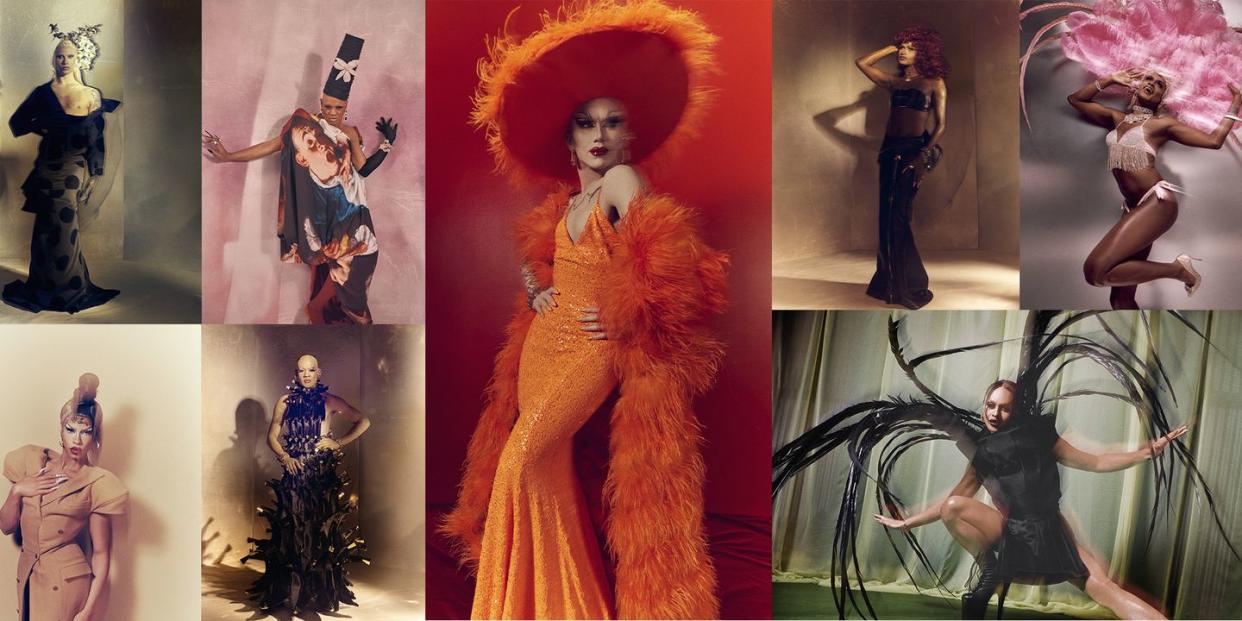
"Hearst Magazines and Yahoo may earn commission or revenue on some items through these links."
Earlier this month, the Human Rights Campaign declared a “national state of emergency” for LGBTQ+ Americans. The past year has seen a shocking rise in legislation that targets queer people, with more than 525 bills introduced across 41 states and upwards of 75 signed into law.
Particularly notable are the anti-drag bills, which seem to imply that any performance featuring nontraditional depictions of gender is inherently lewd and dangerous for children. Although the most restrictive of these bills has recently been overturned, the future remains murky, with drag bars and drag-queen story hours around the country targeted by demonstrators and vigilantes.
But—as Alexander Chee writes in an essay for Harper’s Bazaar’s annual Performance issue—drag is a vital means of creative expression, in part because of the playful way it approaches rigid ideas about men and women. No other art form brings together fashion, beauty, comedy, and movement in quite the same manner or requires the same challenging mix of vulnerability and extroversion.
Being good at drag is hard, and the seven performers below are some of the best around. Harper’s Bazaar asked them to tell us their stories: how they got started, what they love about drag, and why it remains so powerful.
BEAUJANGLESS
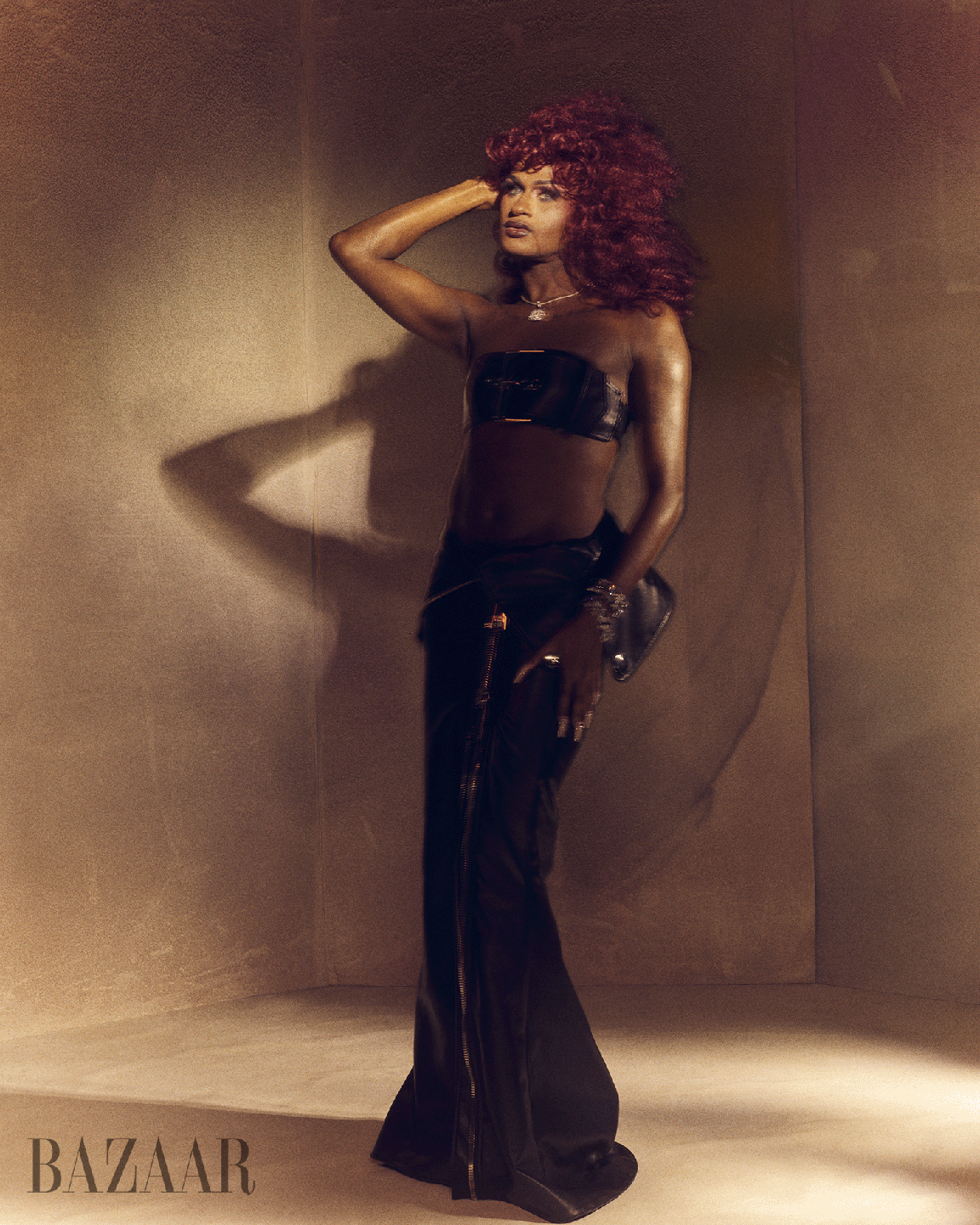
The first drag show I ever saw was Monét X Change in 2015 in New York City. I started going regularly, at least once a week. I thought it was so cool; I just didn’t know how to get myself in it.
At the time, I was modeling and hosting parties in New York. I worked at Bloomingdale’s during the day, and my best friend manned the makeup counter for Chanel, so I would go to her at 3:00 p.m. after my shift was over and get my face done, then go home and destroy anything I had to make a new look so I could go out and be seen.
I got hired to do my first official show back in the summer of 2019, at Metropolitan Bar in Brooklyn. I did a Rihanna mega mix, and I fell fully in love with the stage. Once you develop a brand, people come to see you because they love watching you do what you do. They call me “the Beyoncé of Brooklyn” because I do all of her live performances in my shows.
As queens, we are trying so hard to entertain and to uplift others and make sure that everybody’s having a good time. There are so many instances when people have grabbed me right after my number and said, “I really needed to hear that song today. It reminds me that I’m a strong, powerful person.” We’re not doing anything malicious. We’re following our dreams and doing it graciously while putting smiles on other people’s faces.
If you read history books, you see that this hate we’re currently experiencing is cyclical. I think about my drag elders from back in the day and how strong they were. Marsha P. Johnson and Sylvia Rivera were pioneers. All those women who stood their ground at Stonewall—they deserve the world. They deserved better than what they got. That’s why we’re here, that’s why we’re queer, that’s why we’re doing what we have to do to make our parents, our elders proud.
As told to Ariana Marsh
SASHA VELOUR
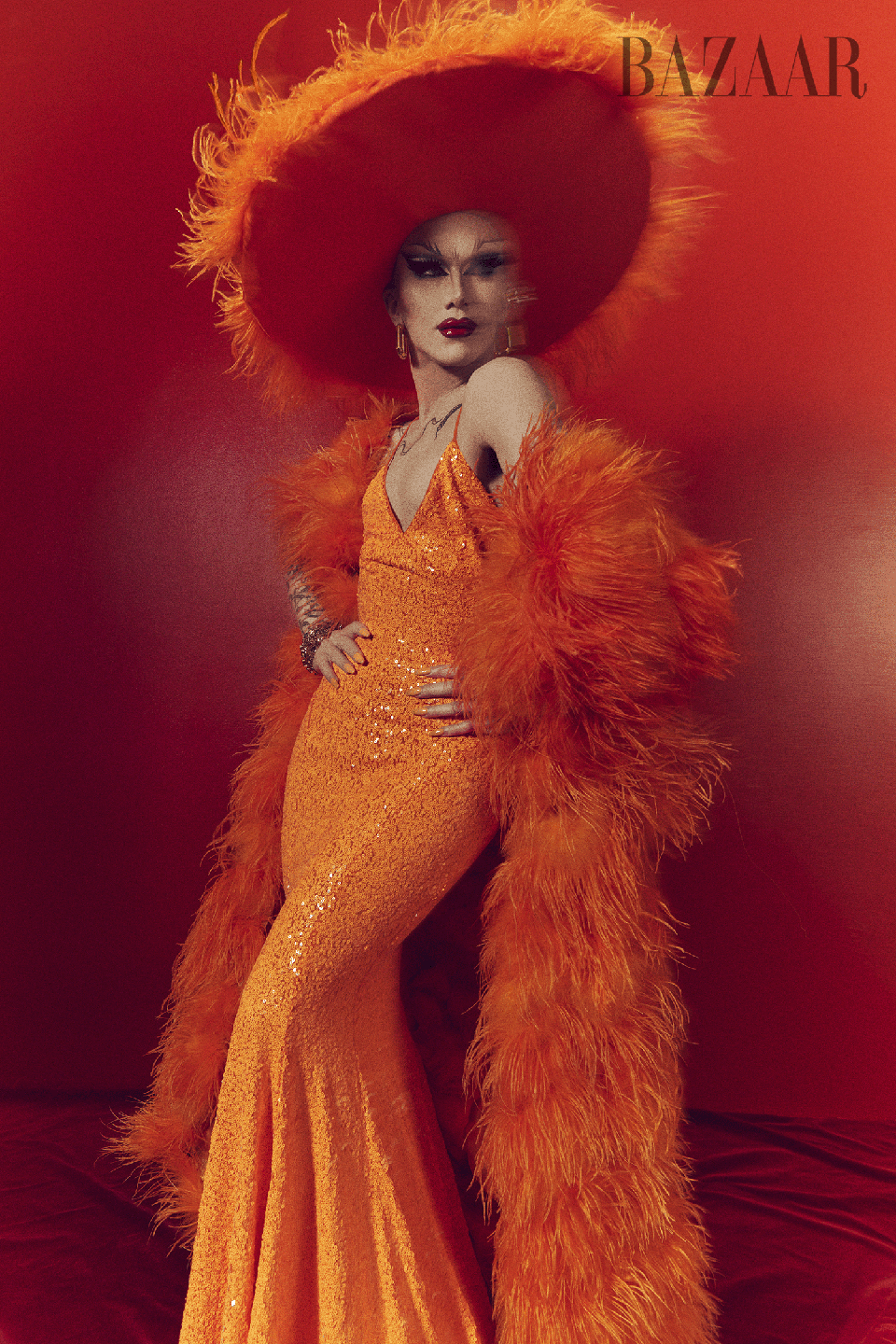
I struggle with eye makeup, but lipstick is very affirming for me. I like to say that I have always been doing drag; I just didn’t know what it was called. As a little kid, I would dress up and imagine myself performing all the lady roles I would watch in the movies. It helped me find myself.
My nickname was always Sasha. I got Velour from a little camp sci-fi drag film made in the ’90s called Vegas in Space. As a kid, I hadn’t really realized my drag character yet, but I was drawing a drag alter ego in my comics.
I was always drawn to the kind of alien, beyond-gender look of having absolutely no hair, but the real motivating factor was that my mom lost her hair because of cancer treatment right at the time I started drag. She made some points about how much femininity is tied to having hair. And I thought, “Look at your face and how gorgeous you are and the clothes you wear and the earrings.” She had some interesting feminist concerns about drag, but she didn’t really understand it, which is why we have to make it part of the conversation.
My family—a bunch of loud, fabulous Jewish people who love playing music at full volume and dancing around—always made me feel welcome. But when I was four or five, they warned me that maybe not everyone would be so accepting, and I felt that from a lot of the other kids at school. So I kept that part of myself hidden.
Drag was not available in the ’90s. It wasn’t until I was an adult that I saw it out in the world, finally, in New York—art in the middle of a bar. I was learning about the way drag was an art form, but also about the activists, figures like the great Sylvia Rivera and José Sarria, who were using the attention that came with being in drag to demand equality for physically queer and trans people.
When I started drag, I didn’t think about the audience. I just wanted to feel empowered and beautiful. Now, my motivation is what it does to people. I’ve seen people really come out of their shell by going to drag shows, not to mention doing drag themselves. And I think that’s why conservatives are scared of us. We are asking the world to change, to make room for people to be their full selves.
I’ve seen all kinds of people coming to drag shows and loving it. That’s what’s so at odds with these anti-LGBTQ laws. It’s scary to be met with literal death threats every day, but in the world I do see growing love and acceptance of queer and trans people.
The biggest misconception about drag is this idea that it’s a mockery of gender. Even if it’s funny, it’s never a mockery. We’re paying homage to ideas of femininity. It’s about getting together to form a new love language around gender that feels welcoming and safe. And, I mean, for the people who refuse to see any gray area in the discussion of gender, it’s very hard to understand that.
As told to Rosa Sanchez
KEVIN AVIANCE
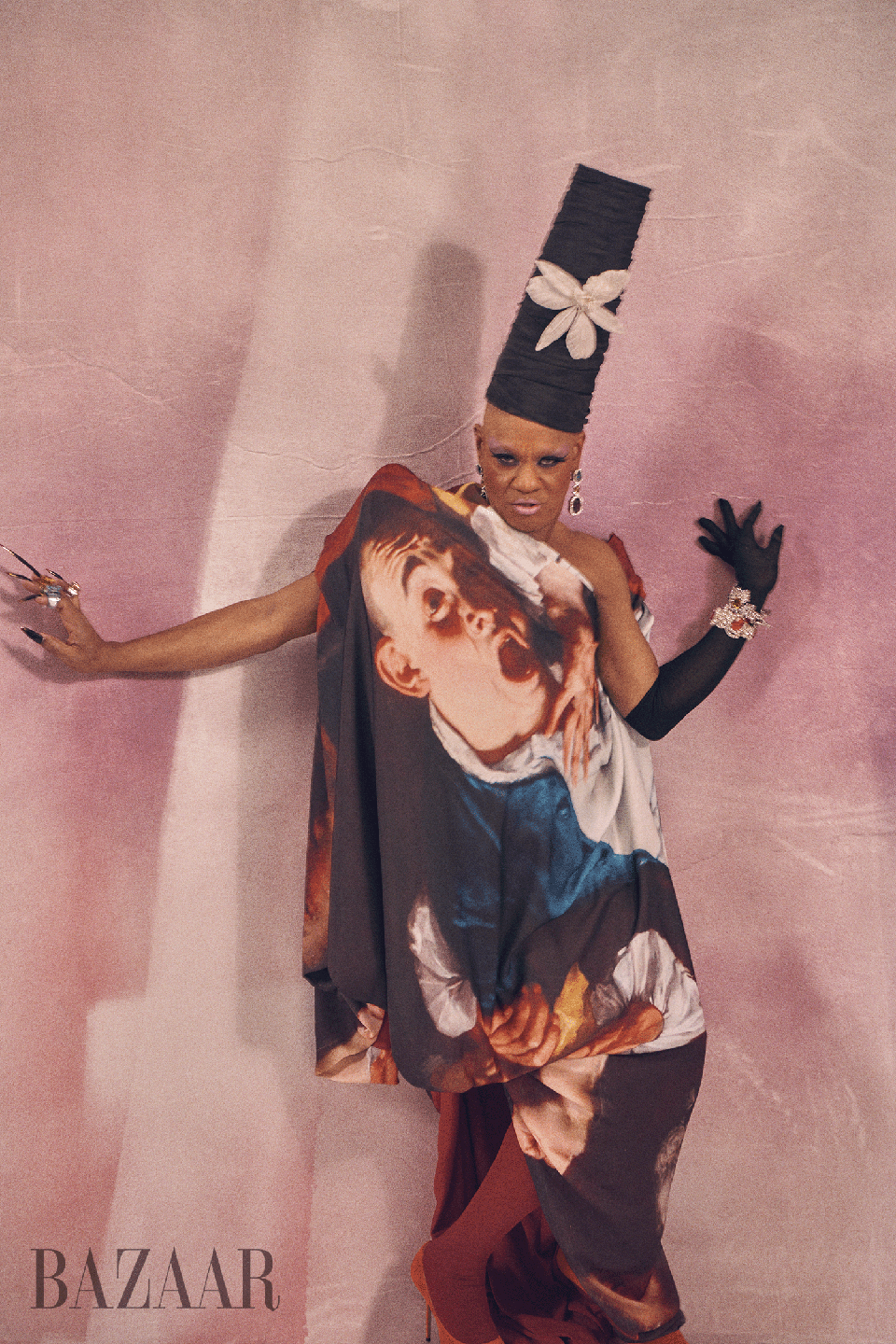
Say you’re an introvert or you’re someone who can’t communicate well or someone who sits in the background. Drag has a way of giving you this armor that makes you a warrior. It makes you a sergeant in the army. When you put it on, you feel yourself come together. I feel the most protected when I am in drag.
I was always a performer. I remember being in ballet class and being like, “This is cute, but this is not what I’m feeling.” Voice class, acting class, like, “Oh, this is really not doing it.” Something was missing.
When I started doing drag, I started with hair and breasts and tucking and all that stuff. But when I got rid of all that stuff and made my own drag? It was incredibly freeing. I mean, I was doing the he-she-them-they thing, gender bending, way before it became chic.
The difference between Black drag and other drag [is that] Black drag is political. Can you imagine being a Black drag queen now, in this day and age? You have to have some really strong bones or you’ll get shattered. It’s real different when Black billionaire songstress diva Beyoncé recognizes you. [When Renaissance came out], I started listening to the album, and it was giving me goose bumps. And then I heard my voice [Aviance’s ’90s single “Cunty” was sampled on Beyoncé’s “Pure/Honey”] and I passed out. Boom, hit the floor. You have no idea what that feels like when you’re somebody like me, girl. It’s like you’ve been cold this whole time and now you are warm. Her doing this album and putting all these gay Black kids on it—we needed someone to do that so bad for us.
Cunty is a feeling that’s anointed from God. It comes upon you. Anyone can feel cunty. It’s been the theme for us in our lives, and especially with what we’re going through now. Mind you, I’m older now, and I used to say to myself, “I may not be cunty anymore, but I’m looking for someone to carry on the cunty.” ’Cause that’s what you do: You move, you let somebody else come through. But no, girl. I’m still cunty, bitch.
As told to Chelsey Sanchez
PLASTIQUE TIARA
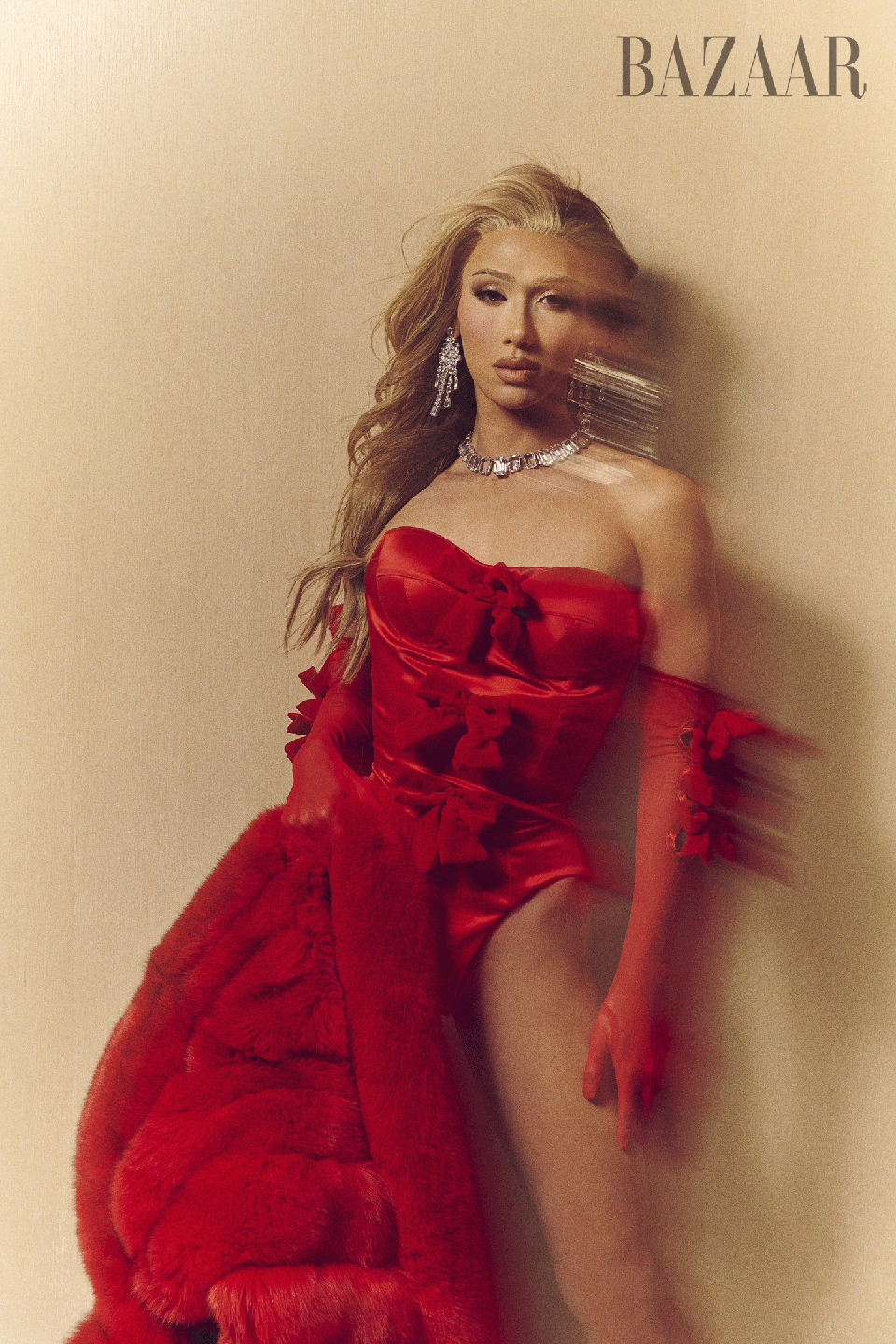
My favorite part about drag is that I get to be my whole self. I started watching Drag Race when I was 15 or 16 years old. I think the first queen I saw was Jujubee—someone who looked like me, who had my skin. And that really awoke something in me.
The first drag show I saw was at a local bar in [Dallas] called Station 4. I would go and see the amateur competitions, and then when I was 18, I went to perform. It was the summer I graduated high school. I secretly ordered a costume and a wig on Amazon. I was very, very nervous, but I’m an Aries, so if I decide to do something, I’m going to do it and I’m going to do it right. As soon as I got onstage, everything went blank. I won, and I’ve had the bug ever since.
I grew up in a very religious, heteronormative Asian family. So when I tried to come out, my parents were not very accepting. It was a breaking point for me. I was like, “Okay, am I gonna be happy, or am I just gonna be in the closet forever?” Doing drag was a way for me to kick myself out the closet, basically. I don’t know if you can be gayer than that.
And then when I started doing drag, it changed my mind about everything I was told was wrong growing up. I was getting praise; people were seeing it as art. I went to beauty school after high school, and before I was a drag queen I was a hairstylist. And I was an art kid in high school, into photography and video, which is why I started doing TikTok. Drag was kind of just a composite of everything I loved.
The character of Plastique Tiara came naturally. Although I was introverted as a kid, I was attracted to very extroverted things like doing hair, doing makeup, and performing, and Plastique gave me an outlet to do these things. I don’t think of her as a character; I think she’s just another side of me where I can express all these things, and she happens to be onstage.
Drag taught me everything that I know about myself. It really opened my eyes to how the world works, the way you carry yourself, the way you express yourself, the confidence you carry throughout every day.
And everything that you do in drag is available to you outside of drag. This power that I have as Plastique, the way I can command the stage? I have the same power when I’m out of drag.
Drag queens have always been on the front line fighting for rights for LGBTQIA+ people. I think that politicians view us as, you know, the strong soldiers. They think if they take us down, then maybe they can take everyone down. But that’s not going to be the case.
As told to Izzy Grinspan
MISS FAME
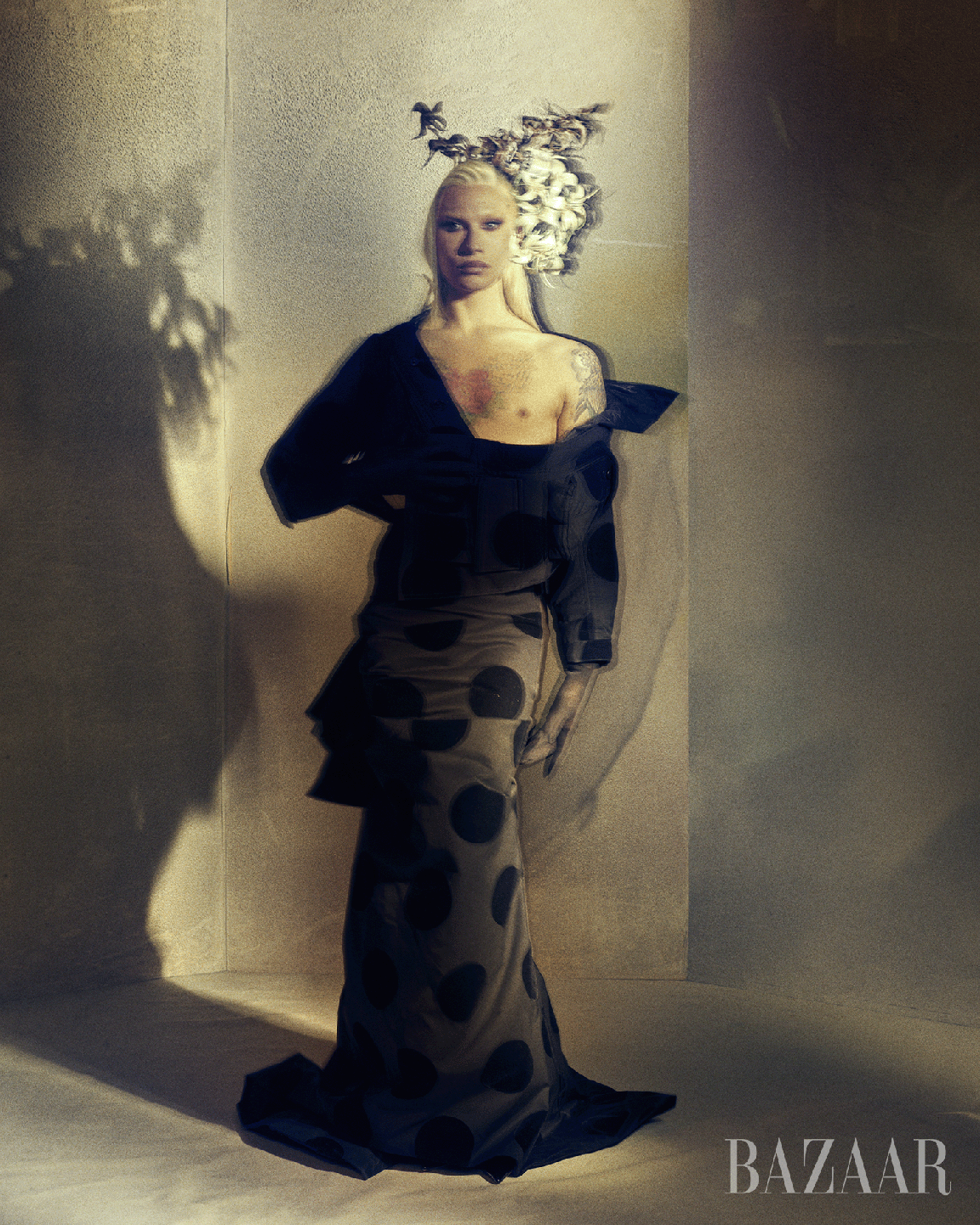
I ’m not going to give up on my identity or my self-expression because somebody’s trying to eliminate me. When you make me uncomfortable, my voice is going to get bigger, because I’m not going to let you shrink me. Sometimes, you’re met with fire when you push back, but we have to stay firm in our truth.
My first official drag was around 18 or 19 years old. I entered a competition at this small bar in San Luis Obispo, California. Places like that provided me with my first eyeful of the queer community. I was mesmerized but terrified. I kind of wanted in, but I wasn’t sure; I still was tiptoeing. And look at where I’m at today.
Curiosity led me to answers within myself: clarity and truth. I got sober at 20, so because I didn’t have liquid courage, I had to face my feelings straight up. Makeup and hair and all the things that us artists do to put ourselves together—that gives us our armor.
My aunts had sparkle. They were homecoming queens and prom queens. They didn’t even know their power, but I saw it. Then I started to see my own and say, “Well, whatever I’ve been blessed with, I’m going to keep it. I’m going to take care of it. I’m going to continue to advocate for that, and I’m going to be that for others.”
If I had a little me, I’d be like, “You are amazing. You’re going to make it. You’re worthy.” That dialogue needs to be something that we learn to tell ourselves. We have to find the voice inside of us that says, “You’re good enough.” I take a lot of time to tell myself I’m worthy. And I think that our community needs to continue to tell ourselves that we’re worthy. The world is dimensional. Shouldn’t we all be mindful of that? I love different. Different makes the world pretty, makes it interesting.
I’m proud and I’m grateful that I’ve found this part of my life, that I leaned in and I didn’t let it be reduced or shrunk to make people comfortable, because that would just be a missed opportunity. We should never reduce ourselves for anyone’s opinion. We should always try to maximize ourselves and project what we are in all stratospheres of our life.
As told to Nikki Ogunnaike
SASHA COLBY
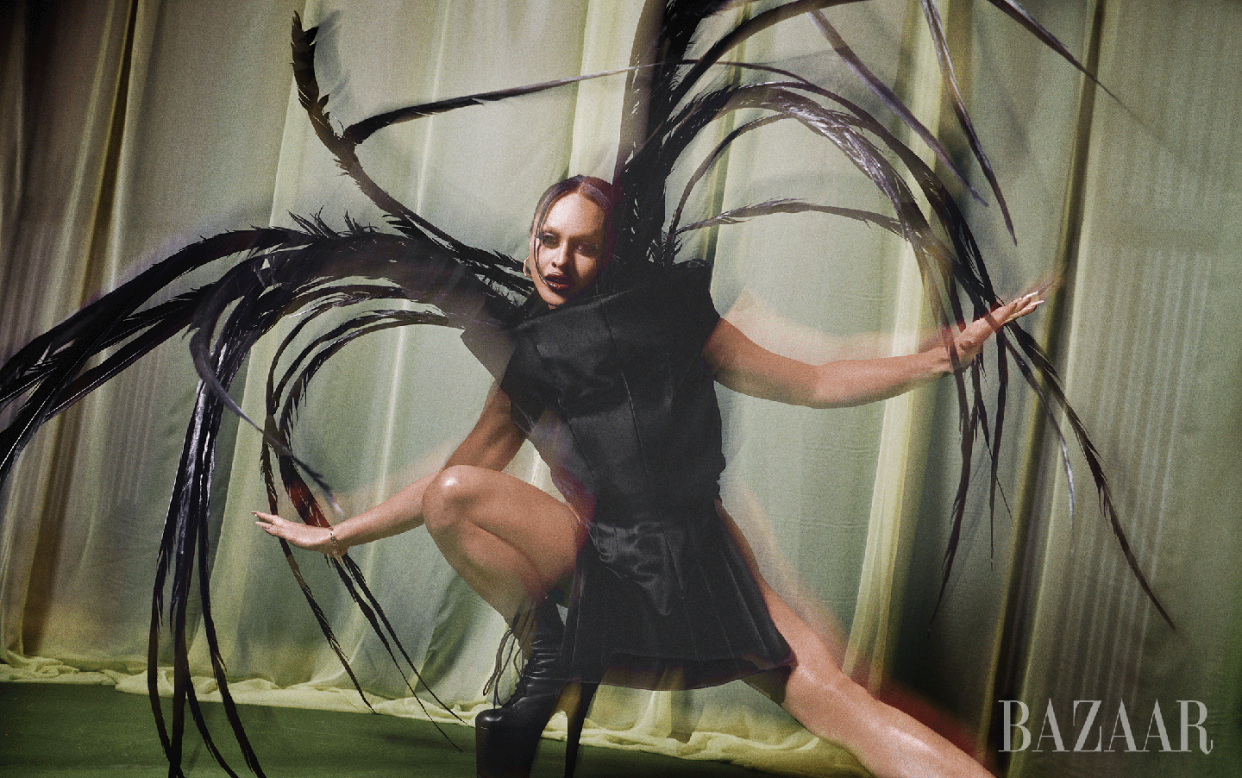
Seeing the vastness of the ocean and the depths of the rainforests in Hawaii, it makes you feel like your problems aren’t as big as you make them to be. I always try to practice the aloha spirit when I’m working or meeting new people. It’s very important to me to show the world what it’s like to be raised in Hawaii.
My sister introduced me to being ultra girly. She had really pretty clothes that I would dress up in while she was at work. I also had a sister-in-law who was this ultra-feminine woman. She had white marabou-feathered kitten heels with a matching satin robe with the feather trim. I just thought that was everything I wanted to be. She would roller-set her hair with hot rollers, and I still do that to this day. Those were the women in my life who were truly feeling their inner feminine-goddess energy. And I thought, “Well, I’m definitely gravitating toward that more than my brothers doing construction.”
I grew up watching the Miss Continental pageant. Everyone then was trying to be the ultimate ’90s supermodel; every single drag star looked like Naomi or Cindy or Linda. I think that’s still why I’m enamored with that era. It was the era of glamour, and they had so much body and tits, ha!
The first time I went to Miss Continental, I was 21 and I didn’t know what I was doing. My best friend and I were just trying to keep up with the legends. The first time they saw me, it was in the swimsuit category. My best friend said, “Sasha, do what you normally do. Don’t get intimidated. Just act like how we dress up!” And I did. I went out there with no inhibitions. And the crowd went up. At that moment, I thought I could do anything.
Being able to connect with an audience on that huge of a level while just being yourself was so empowering to me. I thought, “Oh, I can literally do what we’ve been playing around doing for years.” To this day, that’s what I do.
I think drag is just something that the world needs. We need some fantasy, we need some magic, we need some queer joy to combat what’s really going on in the world. And drag will evolve however the world evolves. Drag will always push the boundaries of people’s conception of gender identity and culture in general. I love this moment that we’re living in, where so many queer people of color are coming together and being celebrated and highlighted. We’re always going to be about inclusivity and about providing magic and a safe space for people who get tossed out by society.
The anti-gay rhetoric is just insane and to me is another way of being anti-human. Politicians are trying to dehumanize queer people at every opportunity they can. To say that we are grooming people is ridiculous. We are already ostracized, and we have made our own community because of that. Because we’re nurturing and caring for ourselves, that mindset absolutely trickles down to children eventually, where they feel safe enough to be themselves. We’re allowing younger kids to be more accepting of others and of themselves—and that’s what they are really upset about.
They remind me of that bully in high school. It’s like, “Girl, you just wanna be in drag too! You’re jealous!” And why wouldn’t they be? Our world is so fabulous and so sparkly.
As told to Bianca Betancourt
SERENA TEA
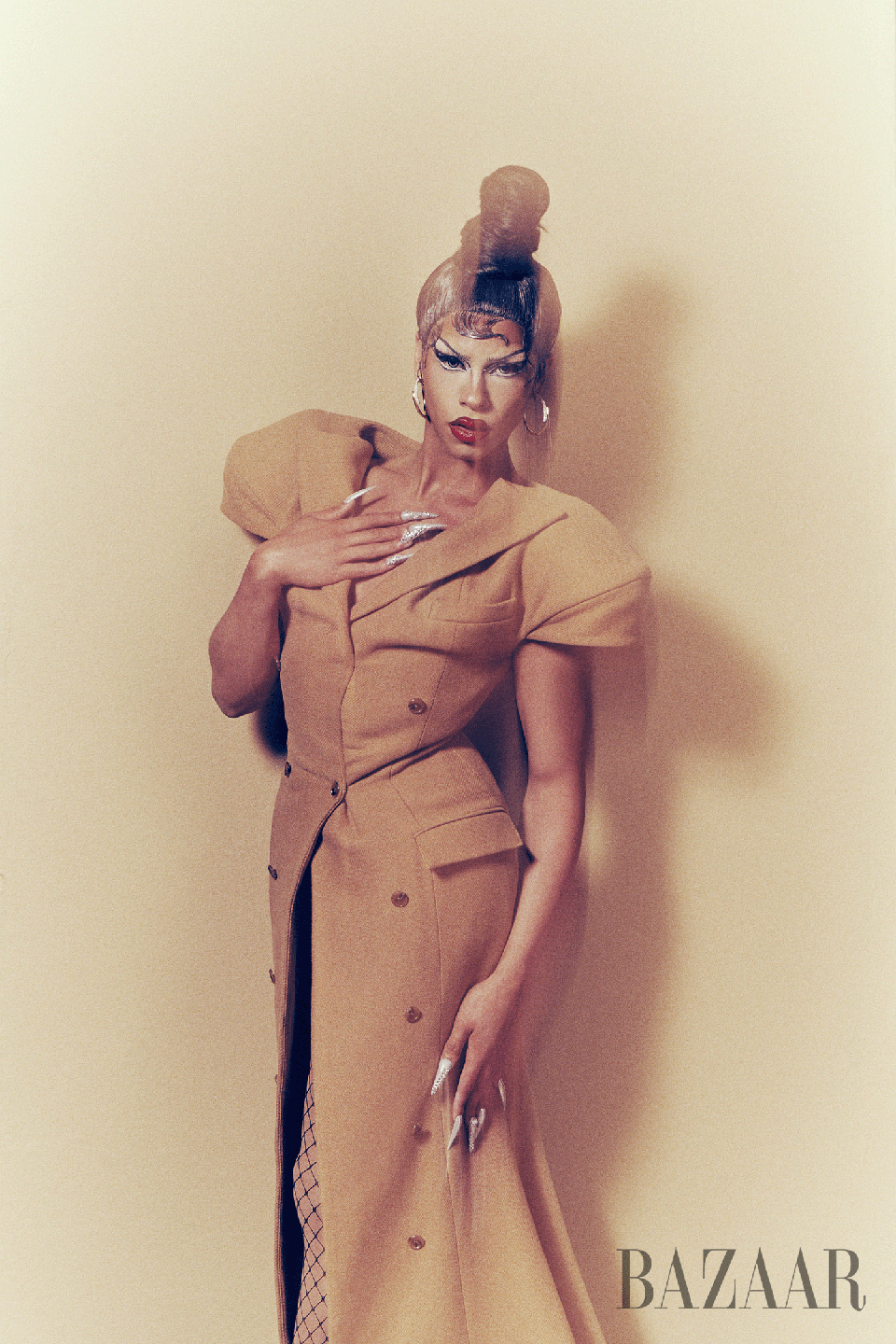
Drag has taught me that I’m a lot more powerful than I think I am. I’m my biggest critic. I’m very, very hard on myself. But every now and then, I’ll catch a glimpse of myself in the mirror or see a performance video or just have someone come up to me and express how much my drag has helped them, and I’m able to remember why it is I do what I do.
I was so confused about who I was before I found [the drag community] because I didn’t really have a lot of queer people in my life. My best friend—the only other queer person I knew—passed away when we were 17, and I was really, really lost. I remember just yearning for everyone around me to be queer. And I’ve found that now. My community’s really, really beautiful.
Drag has helped me escape in a healthy way, but it’s also helped me give that opportunity for the queer community around me to be together while we’re performing, having a show, and just kiki-ing. I’m present in a way that I’ve never felt before, unless I’m performing. It’s therapeutic. Everything just connects and flows.
I work at a drag brunch spot called Lucky Cheng’s. It’s basically a restaurant under a restaurant in a basement in Times Square, and we get a lot of tourists and a lot of bachelorettes and birthday parties. In the beginning of the show, people are always a little hesitant; I can see that they’re a little uncomfortable. At the end of it, people are asking for pictures, they’re thanking us, they’re saying how they’ve never experienced anything like this. With the political climate right now, it’s so important for people who are not in this New York bubble [and who don’t] have a lot of exposure to queer people to see that we’re just artists. We’re here to help people feel good. We’re here to celebrate life and freedom of expression.
I also am aware that it’s not really about just drag queens. It’s about the trans community as a whole. It is really hard on my trans brothers and sisters, and I try to be there for them as much as I can.
We’ve always been faced with ridicule, and we’ve always found ways out of it, and that makes us stronger. Queer people and the LGBT community—the alphabet people, they call us—make up a really, really big part of the world. So, you’re just gonna have to get used to it.
As told to Chelsey Sanchez
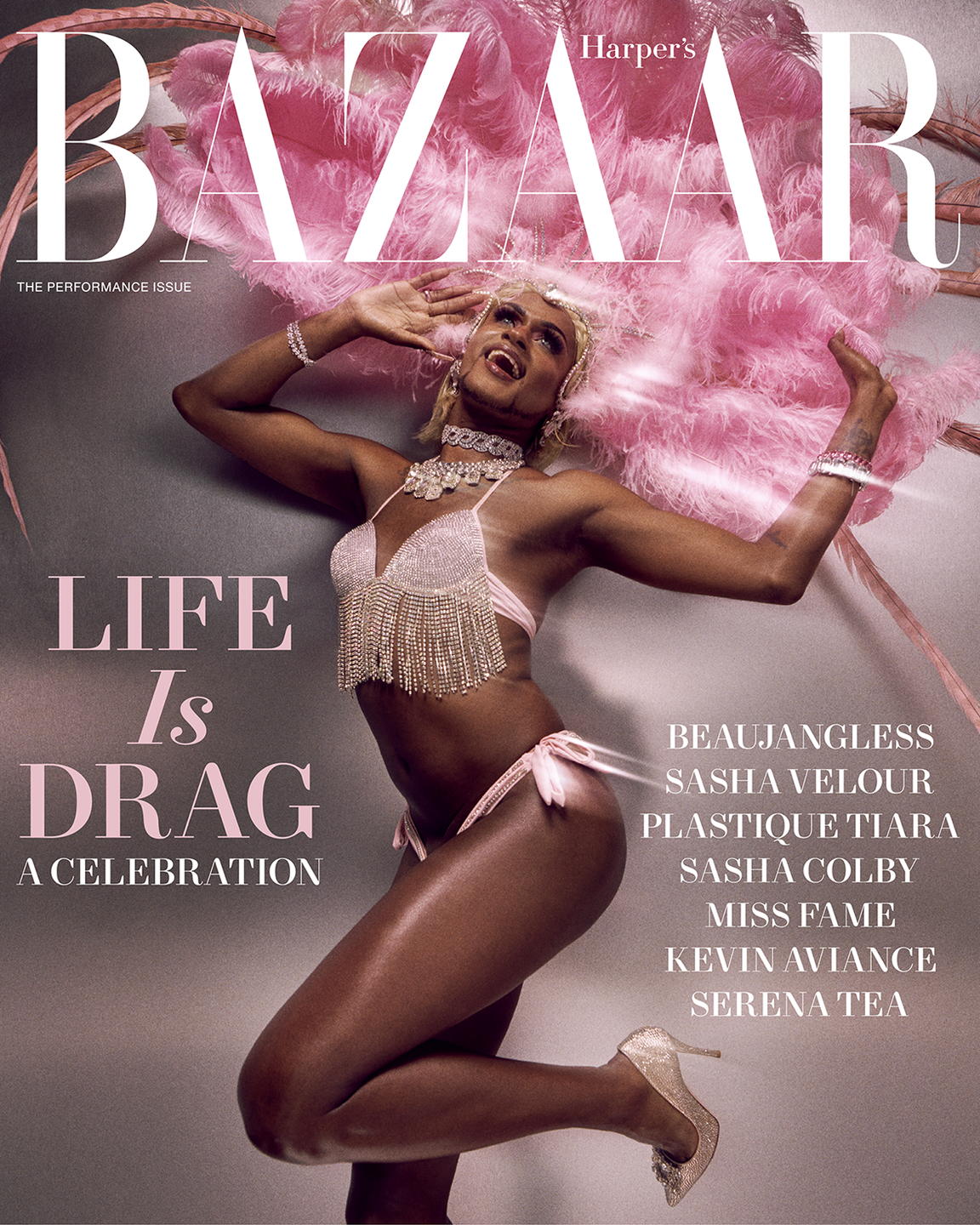
A version of this article will appear in the August 2023 issue of Harper's Bazaar, on newsstands July 25
SUBSCRIBE NOW
Hair for Miss Fame: Sean Michael Bennett; Makeup for Kevin Aviance: Darvell Freeman for M.A.C.; Manicures for Miss Fame, Kevin Aviance, and Beaujangless: Michina Koide for Dior Vernis; Manicures for Sasha Colby, Serena Tea, Plastique Tiara, and Sasha Velour: Marisa Carmichael for Aprés Nail; New York set design: Javier Irigoyen; Los Angeles set design: Bryan Porter for Owl and the Elephant; Los Angeles production: Alicia Zumback for Camp Productions
You Might Also Like
